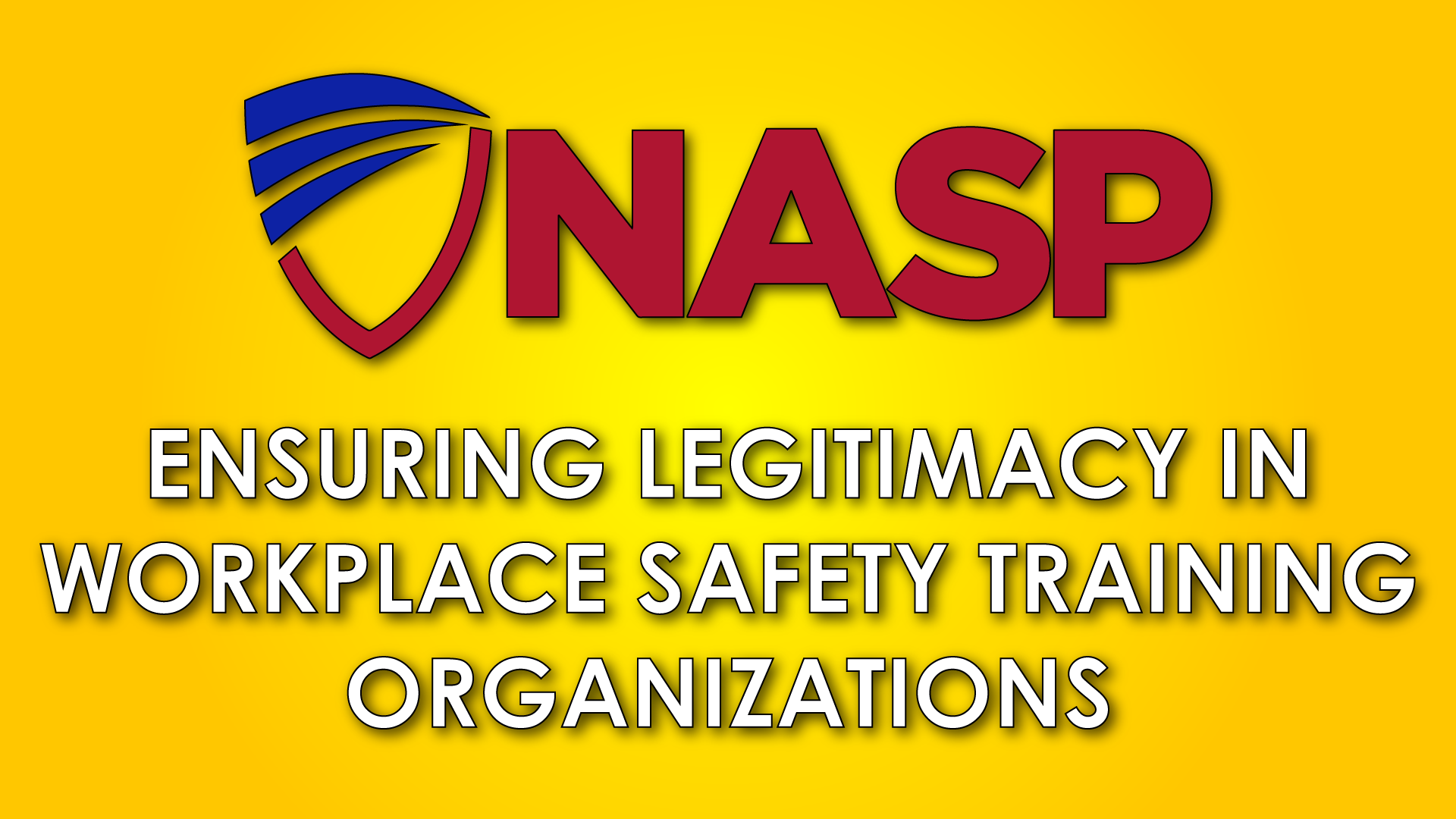Ensuring Legitimacy in Workplace Safety Training Organizations

In today’s market, the importance of workplace safety training cannot be overstated. However, with the rise of numerous training providers, distinguishing between legitimate organizations and fraudulent ones has become increasingly challenging.
To navigate through the multitude of options and ensure you’re engaging with a reputable and effective training provider, here are comprehensive steps to follow:
1. Check Accreditation and Certifications
Legitimate training organizations should be accredited by recognized industry bodies or accrediting agencies. For example, the International Accreditors for Continuing Education and Training (IACET) is the developer of the original Continuing Education Unit (CEU). Their rigorous accreditation process ensures entities providing continuing training and education can offer excellent instruction meeting or exceeding ANSI/IACET standards.
2. Research the Organization’s History
A reputable organization should have a solid track record. Research how long it has been operating and its experience in the industry. This information can often be found on its website or through business networks such as the Better Business Bureau (BBB).
3. Review Course Content
Ensure the course content aligns with the latest industry standards and regulations. This due diligence is crucial for the safety training to be valid and effective. Industry-specific associations often provide guidelines on what training should cover.
4. Ask for References
Request and follow up on references from businesses that have used their services. This firsthand feedback is invaluable. Be wary of organizations that are reluctant to provide references.
5. Evaluate the Instructors
The qualifications and experience of the instructors are critical. They should have relevant certifications and practical experience in workplace safety. Professional associations in your industry can often provide information on what qualifications instructors should have.
6. Check Online Reviews and Testimonials
Research the organization on independent review sites. While it’s normal for businesses to have mixed reviews, a pattern of complaints should be a red flag. Sites like Trustpilot or even Google Business reviews can offer insights.
7. Verify Business Registration
Ensure the organization is legally registered to operate in your area. This information can usually be found on government websites dedicated to business and professional licensing.
8. Understand the Terms and Conditions
Read any agreements thoroughly before signing. Understand what is included in the cost, the schedule, any guarantees, and the refund policy. Transparency in these areas is a good sign of a reputable provider.
9. Compare With Other Providers
By comparing, you can gauge the market standard for course content, duration, flexibility, and price. This will also help you spot any offers that seem too good to be true.
10. Ensure Ongoing Support and Resources
Look for organizations that offer support beyond the initial training, such as access to updated materials, forums, or further training opportunities. This indicates a commitment to long-term client success.
11. Review the Physical Location and Contact Information
A legitimate business should have a physical address and be easily reachable. Verify these details through a quick online search or a phone call.
12. Look for Community Involvement and Events
Genuine workplace safety training organizations are passionate about continuing to learn, teach, and develop leadership in their industry. Look for live webinars, networking events, and conferences they attend. Feel free to mark your calendar for an upcoming event to meet the organization members and gain more information about their courses.
13. Check Social Media Legitimacy
Usually, legitimate businesses provide links where you can follow them on social media platforms. See if the organization posts frequently on networking and learning platforms like LinkedIn and YouTube. Look for a credible history of posts and check the comments to see their engagement and interactions with community members.
Beware of Fake Training Organizations
The market is unfortunately rife with fraudulent training providers looking to exploit businesses seeking to comply with safety regulations. These scams can range from offering invalid certifications to completely fabricated courses that provide no real value. Always conduct thorough research and due diligence before committing to a training provider.
Common Signs of Fake Safety Training Organizations
A few signs can help you identify a fake course for workplace safety training. Look for the following:
- OSHA Certified Training: OSHA does not certify any agency’s training. Beware of companies touting their training as OSHA-certified; it does not exist, and it should not be claimed that OSHA endorses it.
- Pressure tactics:Some fraudulent safety training courses create a sense of urgency to get you to pay for a course. While some authentic companies provide genuine offers, you should look for pressure tactics, including claims of limited availability, limited-time offers, and countdown offers. Always research a company’s legitimacy before finalizing your purchase.
- Unrealistic promises: Many scam courses overpromise what you can achieve from the course. Be wary of courses guaranteeing something that seems too good to be true, like immediate results, a massive increase in skills with little time or effort taken, and a high-paying job. Genuine course providers can’t guarantee these things due to everyone’s different circumstances. And finally, if a course states that you can become a ‘competent person’ by taking a quick, ‘awareness’ online training course, buyer beware!
- Poor-quality website:Scammers often set up websites quickly without investing too much time or money into them. Look for a generally unprofessional appearance, low-quality images, and bad grammar or spelling. Legitimate course providers have a polished, informative, and trustworthy online presence.
- Lack of detailed course content:Ensure you can identify the curriculum, course learning objectives, and skills learned from training. If you can’t find that information, this may be a sign of a fake course. Genuine course providers create descriptions with ample relevant information.
- Unverifiable credentials or accreditations:Look for displays of verifiable credentials or accreditations. The qualifications should come from reputable organizations and educational institutions. If you need help finding this information, this could be a sign that the provider and courses aren’t legitimate.
Useful Resources
For additional support and resources in verifying the legitimacy of a training organization, consider consulting the following:
Ensuring the legitimacy and effectiveness of a workplace safety training organization is crucial not just for regulatory compliance but for the safety and well-being of your employees. By following these steps and utilizing available resources, you can confidently choose a training provider that meets your needs and upholds the highest standards of quality and integrity.
Get Additional Tips and Information
Have questions about ensuring legitimacy in workplace safety training organizations? Looking for specialized training? Feel free to contact the team at the National Association of Safety Professionals (NASP) to learn more.
Related Posts




